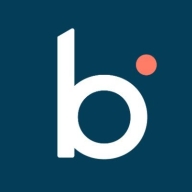

Find out in this report how the two Data Integration solutions compare in terms of features, pricing, service and support, easy of deployment, and ROI.
We have automated complete order-to-cash processes for multiple customers, saving over 90 million dollars.
The return is faster since development efforts are minimized, allowing for quicker integration delivery.
The technical support is responsive and helpful
The technical support from Microsoft is rated an eight out of ten.
The technical support for Azure Data Factory is generally acceptable.
The tech support is very good, offering immediate responses and chat options.
Seamlessly meeting SLAs and providing excellent responses to challenges and issues related to interface and data connectivity.
We receive service that is more than adequate, even exceptional.
Azure Data Factory is highly scalable.
We have built approximately 1,100 interfaces for one customer, which is a significant achievement.
The reason we wanted to use our own Kubernetes cluster was to do automatic scaling for utilized resources, allowing us to save.
The solution has a high level of stability, roughly a nine out of ten.
Sometimes, the compute fails to process data if there is a heavy load suddenly, and it doesn't scale up automatically.
Incorporating more dedicated API sources to specific services like HubSpot CRM or Salesforce would be beneficial.
There is a problem with the integration with third-party solutions, particularly with SAP.
With proper version control, you could know which version to revert to and test other versions.
The ETL aspect of Boomi iPaaS is not mature enough at the moment.
The integration landscape has become complex, and having a data strategy with unified data models would make integration easier for any platform, including Boomi.
The pricing is cost-effective.
It is considered cost-effective.
While pricing is relative, compared to others, it is favorable.
The pricing for Boomi iPaaS is reasonable, costing around $6,000 per year.
It connects to different sources out-of-the-box, making integration much easier.
The interface of Azure Data Factory is very usable with a more interactive visual experience, making it easier for people who are not as experienced in coding to work with.
I find the most valuable feature in Azure Data Factory to be its ability to handle large datasets.
It provides automation for everything from order to cash, which is thoroughly documented, tracked, and streamlined within Boomi iPaaS.
When developers learn how to use it, they become productive sooner.
The most valuable features of Boomi are the integration capabilities, the Data Hub product, and the UDI integration.


Azure Data Factory efficiently manages and integrates data from various sources, enabling seamless movement and transformation across platforms. Its valuable features include seamless integration with Azure services, handling large data volumes, flexible transformation, user-friendly interface, extensive connectors, and scalability. Users have experienced improved team performance, workflow simplification, enhanced collaboration, streamlined processes, and boosted productivity.
The Boomi AtomSphere integration platform as a service (iPaaS) supports all your application integration processes – between cloud platforms, software-as-a-service applications, and on-premises systems. Your entire team has online access to a powerful range of integration and data management capabilities, that can be realized in a fraction of the time of legacy middleware technologies.
We monitor all Data Integration reviews to prevent fraudulent reviews and keep review quality high. We do not post reviews by company employees or direct competitors. We validate each review for authenticity via cross-reference with LinkedIn, and personal follow-up with the reviewer when necessary.